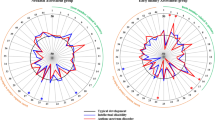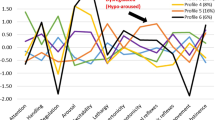Abstract
OBJECTIVE: To determine whether Kangaroo Care (KC) for healthy, low-birth-weight (LBW) infants can promote better behavioral and developmental outcomes.
STUDY DESIGN: In this historical control study, 26 infants in the KC group (GA: 34.3±2.5 weeks, BW: 1833.9±167.6 g) and 27 infants in the comparison group who received the standard medical–nursing care (34.6±2.3 weeks, 1850.9±156.7 g) were analyzed by the Neonatal Behavioral Assessment Scale (NBAS) at 40 weeks of postmenstrual age, the Bayley Scales of Infant Development and the Carey's Infant Temperament Questionnaire (ITQ) at 6 and 12 months corrected ages.
RESULTS: KC infants had significantly higher NBAS scores in Orientation, State Regulation, and Supplementary items; lower Intensity scores and higher Mood scores at 6 months on the ITQ; and higher Bayley Scales score at 12 months.
CONCLUSION: KC effectively promoted neonatal behavioral organization and enhanced developmental outcome over the first year of life for LBW infants.
This is a preview of subscription content, access via your institution
Access options
Subscribe to this journal
Receive 12 print issues and online access
$259.00 per year
only $21.58 per issue
Buy this article
- Purchase on Springer Link
- Instant access to full article PDF
Prices may be subject to local taxes which are calculated during checkout
Similar content being viewed by others
References
Newman LF . Parents' perceptions of their low-birth-weight infants Paediatrician 1980; 9: 182–90
Acolet D, Sleath K, Whitelaw A . Oxygenation, heart rate and temperature in very low-birth-weight infants during skin-to-skin contact with their mothers Acta Paediatr Scand 1989; 78: 189–93
Bosque EM, Brady JP, Affonso DD et al. Physiologic measures of kangaroo versus incubator care in a tertiary-level nursery J Obstet Gynecol Neonat Nurs 1995; 24: 219–26
Ludington SM . Energy conservation during skin-to-skin contact between premature infants and their mothers Heart Lung 1990; 19: 445–51
Anderson GC . Current knowledge about skin-to-skin (kangaroo) care for preterm infants J Perinatol 1991; 11: 216–26
Sloan NL, Camacho LW, Rojas EP et al. Kangaroo mother method: randomised controlled trial of an alternative method of care for stabilised low-birth-weight infants. Maternidad Isidro Ayora Study Team Lancet 1994; 344: 782–5
Bauer K, Uhrig C, Sperling P, Pasel K, Wieland C, Versmold HT . Body temperatures and oxygen consumption during skin-to-skin (kangaroo) care in stable preterm infants weighing less than 1500 grams J Pediatr 1997; 130: 240–4
Bauer J, Sontheimer D, Fischer et al. Metabolic rate and energy balance in very low-birth-weight infants during kangaroo holding by their mothers and fathers J Pediatr 1996; 129: 608–11
Legault M, Goulet C . Comparison of kangaroo and traditional methods of removing preterm infants from incubators J Obstet Gynecol Neonat Nurs 1995; 24: 501–6
Messmer PR, Rodriguez S, Adams J et al. Effect of kangaroo care on sleep time for neonates Pediatr Nurs 1997; 23: 408–14
Ludington-Hoe SM, Swinth JY . Developmental aspects of kangaroo care J Obstet Gynecol Neonat Nurs 1996; 25: 691–703
Hurst NM, Valentine CJ, Renfro L et al. Skin-to-skin holding in the neonatal intensive care unit influences maternal milk volume J Perinatol 1997; 17: 213–7
Affonso D, Bosque E, Wahlberg V et al. Reconciliation and healing for mothers through skin-to-skin contact provided in an American tertiary level intensive care nursery Neonat Network 1993; 12: 25–32
Tessier R, Cristo M, Velez S et al. Kangaroo mother care and the bonding hypothesis Pediatrics 1998; 102: e17
Gale G, Franck L, Lund C . Skin-to-skin (kangaroo) holding of the intubated premature infant Neonat Network 1993; 12: 49–57
Colonna F, Uxa F, da Graca AM et al. The “kangaroo-mother” method: evaluation of an alternative model for the care of low-birth-weight newborns in developing countries Int J Gynaecol Obstet 1990; 31: 335–9
Brazelton TB, Nugent JK . Neonatal Behavioral Assessment Scale. Clinics in Developmental Medicine 88 London: Blackwell 1995
Bayley N . Manual for the Bayley Scales of Infant Development New York: The Psychological Corporation 1969
Carey WB, McDevitt SC . Revision of the Infant Temperament Questionnaire Pediatrics 1978; 61: 735–9
Caldwell BM, Bradley RH . Home Observation for Measurement of the Environment Center for Child Development and Education, University of Arkansas at Little Rock
Lester BM . Data analysis and prediction In: Brazelton TB, editor Neonatal Behavioral Assessment Scales 2nd ed London: Spastics International Medical Publication 1984; p 85–96
Nugent JK, Brazelton TB . Preventive mental health In: Osofsky J, Fitzgerald H, editors The Handbook of Infant Mental Health Vol. 2: New York: Wiley 2000; p 256–78
Kuhn CM, Schanberg SM, Field T et al. Tactile–kinesthetic stimulation effects on sympathetic and adrenocortical function in preterm infants J Pediatr 1991; 119: 434–40
Whitelaw A, Heisterkamp G, Sleath K et al. Skin to skin contact for low-birth-weight infants and their mothers Arch Dis Child 1988; 63: 1377–81
Author information
Authors and Affiliations
Rights and permissions
About this article
Cite this article
Ohgi, S., Fukuda, M., Moriuchi, H. et al. Comparison of Kangaroo Care and Standard Care: Behavioral Organization, Development, and Temperament in Healthy, Low-Birth-Weight Infants Through 1 Year. J Perinatol 22, 374–379 (2002). https://doi.org/10.1038/sj.jp.7210749
Published:
Issue Date:
DOI: https://doi.org/10.1038/sj.jp.7210749
This article is cited by
-
A systematic review and multivariate meta-analysis of the physical and mental health benefits of touch interventions
Nature Human Behaviour (2024)
-
Evaluation of the impact of continuous Kangaroo Mother Care (KMC) initiated immediately after birth compared to KMC initiated after stabilization in newborns with birth weight 1.0 to < 1.8 kg on neurodevelopmental outcomes: Protocol for a follow-up study
Trials (2023)
-
Early skin contact combined with mother’s breastfeeding to shorten the process of premature infants ≤ 30 weeks of gestation to achieve full oral feeding: the study protocol of a randomized controlled trial
Trials (2021)
-
Community initiated kangaroo mother care and early child development in low birth weight infants in India-a randomized controlled trial
BMC Pediatrics (2020)
-
Longer duration of kangaroo care improves neurobehavioral performance and feeding in preterm infants: a randomized controlled trial
Pediatric Research (2020)



